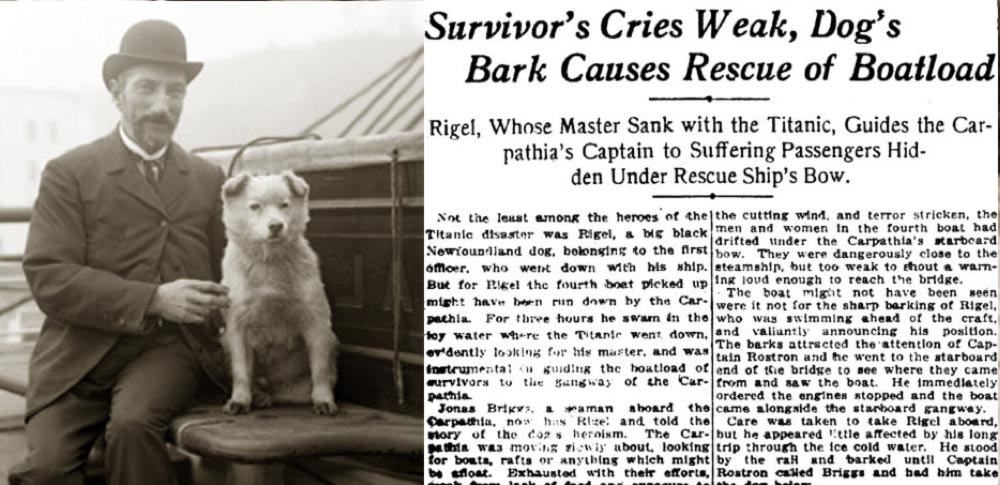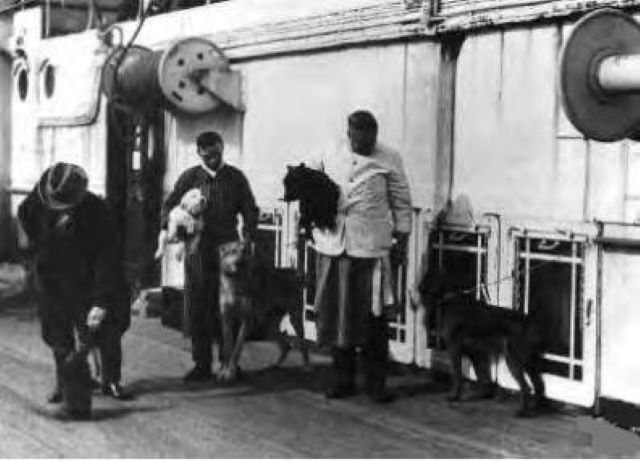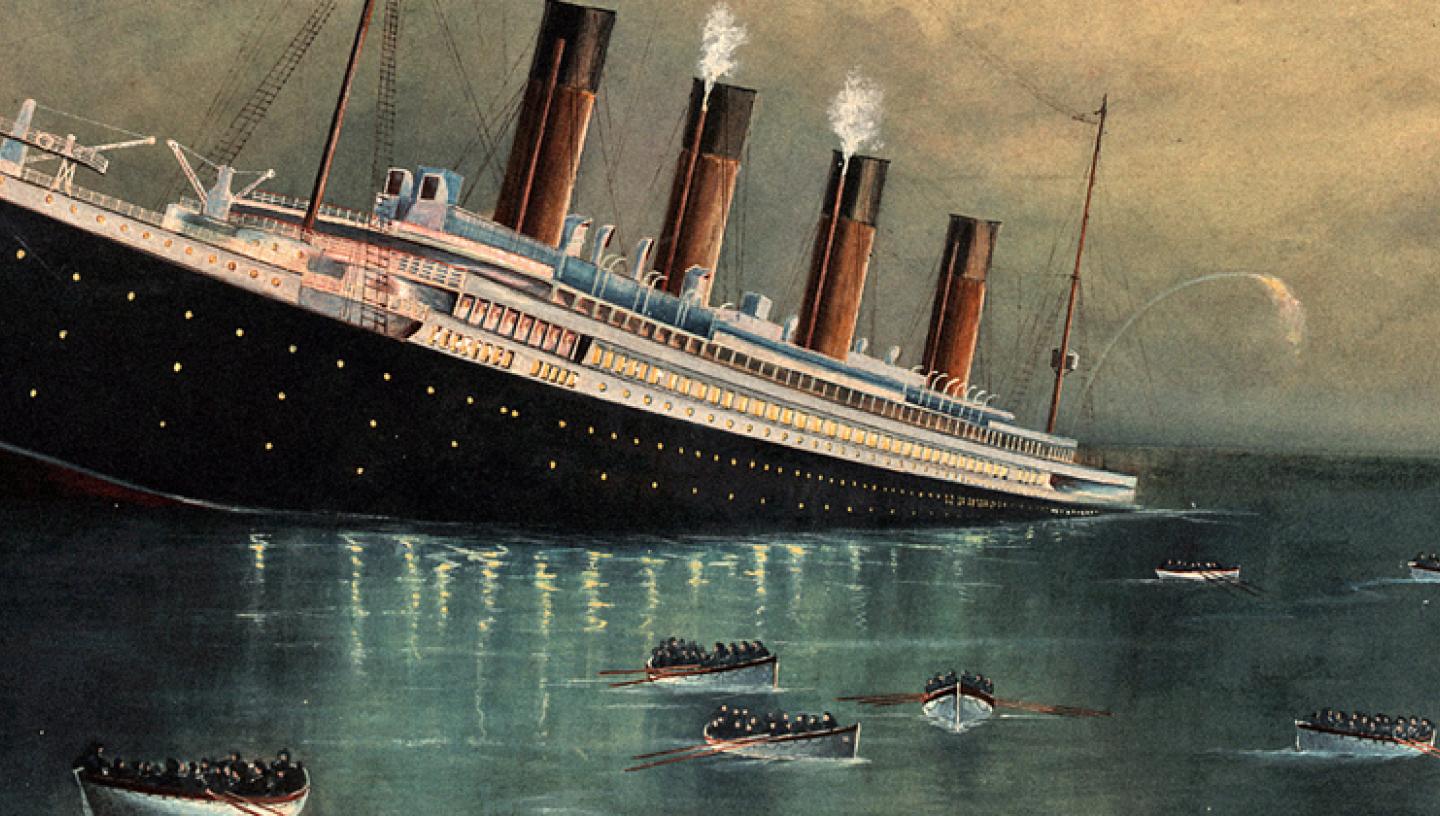By Georgia Rousta,
“Was there room for Jack on the door?”. Even though Jack was never a real passenger on the ship, and the whole scene was just a means to the dramatic end of the film, this question has been circling the mind of everyone who has seen the Titanic (if you ask me, there definitely was). Over the passing years after its sinking, more light has been shed on the tragic story of this historic ship and many theories have been stated referring to its collision and end. Yet, there are still some aspects of this tragedy that are in the dark for most of the population.
It came to me unexpectedly, the thought of whether there were pets aboard or not, part of those chained thoughts, one leading to the other that left me questioning. So, I started searching. It may seem self-explanatory if there were animals on the Titanic — why would there not be — and there were, but has it been of interest to anyone, and what happened when the ship started to sink?
Before we reach the point of saving the animals from drowning and freezing, let us start with the basics. On the ship, only first-class passengers were allowed to take their pets with them on board after paying quite an expensive ticket for them. The ship was equipped with kennels for the animals to stay during the trip and only very few and small-sized were allowed to accompany their owners in their cabins. The kennels were placed at the base of the dummy fourth funnel and were said to be in great condition.

The four-legged passengers of the ship were reported to be 12 and all of them were dogs, although it is believed that the number was higher. There were other animals, as well, such as cats to keep the population of mice in control and a few birds, but only the dogs had been boarded as pets and were the only animals that saw survivors, although very few, from the sinking.
From the 12 reported dogs on board only 3 were able to survive, all of them small dogs. The owners of two Pomeranians and a Pekingese were able to carry them in their hands or hide them under their coats and blankets as they were trying to escape the sinking ship and be carried to safety by getting on the lifeboats.
There are some really interesting stories concerning the rescue – or not – of the dogs. The owner of one of the Pomeranians, Mrs. Elizabeth Rothschild, refused to get on the rescue boat unless her furry companion came with her, which had been declined by the crew of the boat. In the end, Mrs. Rothschild succeeded in her goal of getting on the rescue boat with her Pomeranian in her arms and of both of them surviving. Even if Rothschild was able to survive the Titanic with her dog by her side, she still suffered the loss of her husband from the shipwreck.
That is one of the few happy tales referring to the rescued people and animals of the Titanic’s tragedy. There is one particular story that once you hear about it, it is impossible to ignore its sadness and heartbreak, and hopeless to make it leave your memories. That is the story of Ann Elizabeth Isham and her Great Dane. Ann refused to get on the lifeboat without her beloved dog, which was too big to board, and chose her own death accompanying her forever partner. The truly agonizing part of the tale is that a few days later, the body of a woman frozen in the position hugging a big-sized dog was found by some searching boats. Despite the sorrow of the story, an escapist would be able to see between its heartache and tragedy and find the beauty of unconditional love and the eternal bond that ties an owner to their pet. Due to that romanticism, this tale is one of the most popular ones among the stories of the short or longer adventures of the dogs of the Titanic.

However, much we want this beautiful, yet, saddening story to be true, it is most likely a myth, as there is no evidence of the body of Ann holding a Great Dane in her arms having been found. In the same category as the legend of this everlasting friendship is the myth of Rigel. Rigel was a Newfoundland dog that helped the crew of the Carpathia to locate the lifeboats with the Titanic passengers through the freezing waters of the North Atlantic and saved many many lives. Though, Rigel’s story and bravery remain a myth and a hopeful fact for the romantic mind.
Myth or not, these tales preserve as proof of how to love and never-ending faithfulness intrigue and captivate the curious and the dreamers. It is proof of the attraction of the human mind to the mystery. Among the tragic losses of more than 1,500 people, it is necessary to shed light on the pets whose lives were lost, as well. After all, they are receivers and givers of great affection and calm.
References
- Titanic dogs. liverpoolmuseums.org.uk. Available here
- Remembering the dogs of the Titanic. akc.org. Available here
- Remembering the dogs of the Titanic. dogingtonpost.com. Available here




